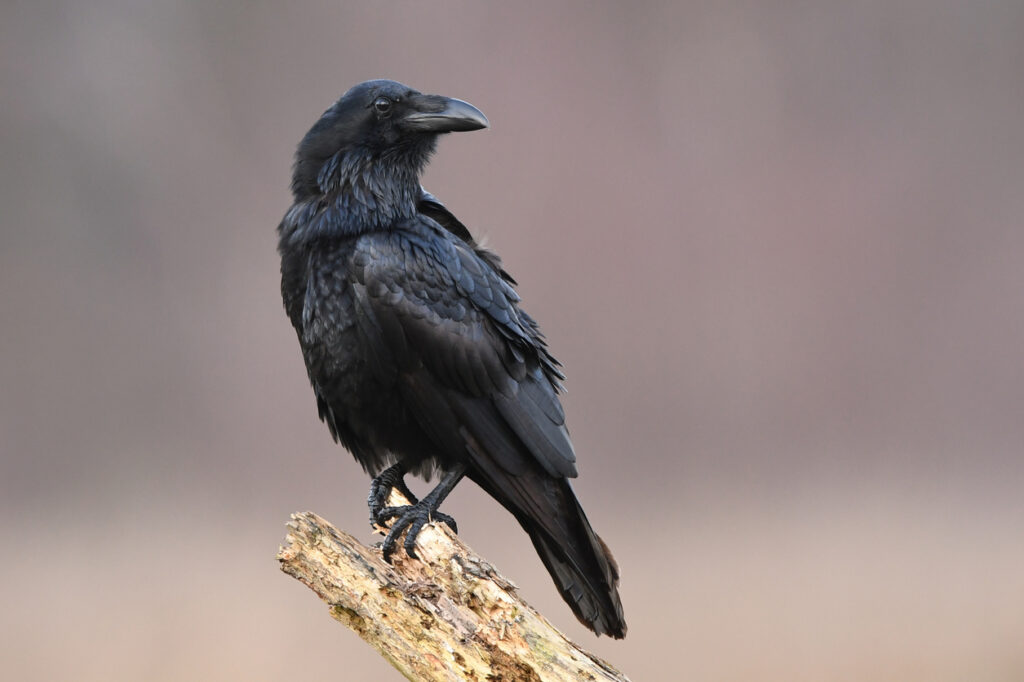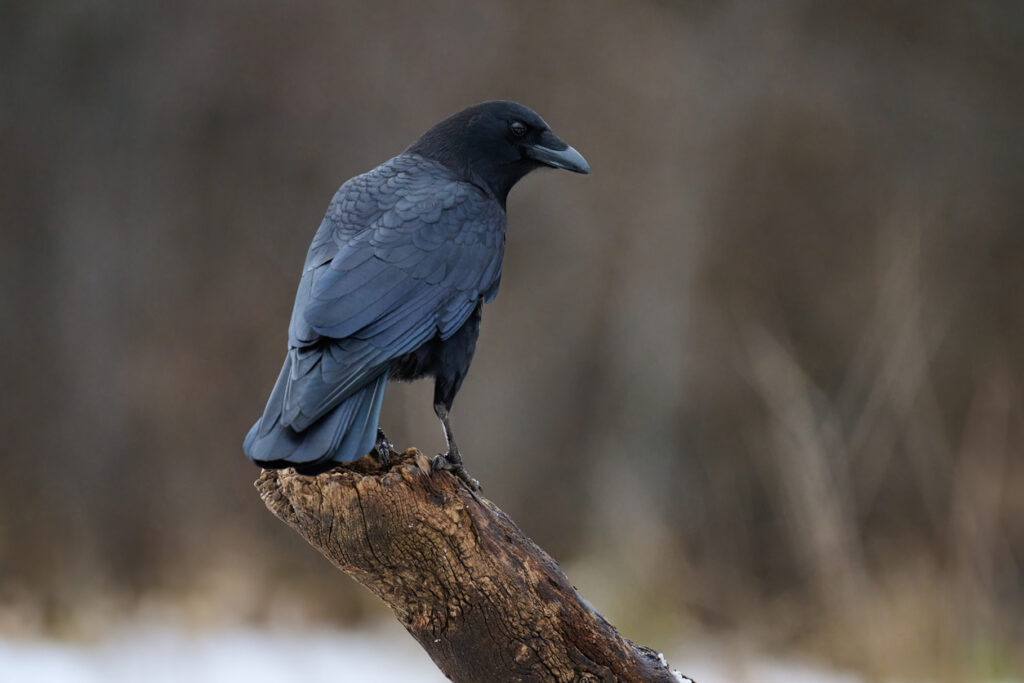Ravens and their close relatives, crows, are large and very vocal black birds that are likely familiar to us all. There are more than 40 species in the Corvid family in the world, but two or three are native to BC. In older texts, the American crow (Corvus brachyrthynchos) is found through the interior of the province, while the coast is home to the similar northwestern crow (Corvus caurinus). The two birds are so similar, in fact, that in 2020, the American Ornithological Society announced that the northwestern crow is no longer a species, but a subspecies of the American crow and so the number of bird species in BC dropped by one. The common raven (Corvus corax) is the most widespread globally of the Corvid family and the same species is found around the northern hemisphere, including basically all of BC.
Crows and ravens are monomorphic, that is, both sexes look alike. The species also look similar, being basically black all over, but with an iridescent sheen that gives hints of blue or purple, particularly on a sunny day. To tell them apart, ravens are much larger, commonly 1.5 kilograms, but can get to be over two kilograms, while crows are about half that size. Both species are considered songbirds, and the raven is the largest of that group in the world.
In flight, crows’ tails have a gently rounded fan shape, while raven tail feathers are longer in the centre and that gives more of a wedge shape to the tail. Ravens have a much longer lifespan than do crows. Crows live for seven to 10 years in the wild and maybe 40 years in captivity. Remarkably, ravens live more than twice that long in the wild and up to 70 years in captivity.
These birds are omnivorous and their diet includes a huge variety of plants, seeds, insects, carrion and human garbage, as well as smaller animals and birds, and raiding nests as the opportunities arise. Both species will stock up by burying or otherwise hiding food for later. The fondness of these birds for dead flesh is possibly one of the reasons for the negative-sounding names for a group of them, namely, a murder of crows and an unkindness or treachery of ravens.
Spring is nesting season for these birds. Mating can occur any time from February to May, but most commonly in late March in southern BC or into April in the north. Clutches can vary from three to seven eggs. The female sits on the eggs for the three-week incubation period, but the male delivers meals to her in the nest. The parents are fiercely protective of the growing chicks and will attack whatever seems a threat to the nest. By September, the young birds are ready to leave home for good, but some young crows stay with their parents for a couple of years (as many as five years), helping the parents to raise the next generations of the family. These birds mate for life, but seemingly are not above a bit of hanky-panky. One study found that a male crow may be responsible for only about 80 per cent of the offspring in his family.
In the BC Wildlife Act, crows and ravens are treated differently. Crows are schedule C wildlife, meaning they can be hunted any time, but you do need a hunting licence unless “you are hunting them on your property or they are damaging your property.” Ravens are protected under the Wildlife Act, except in those regions of the province that have a hunting season for them.
Interactions with crows and ravens can trigger a wide range of human reactions. It may be disgust to see them feeding at the garbage dump. Or, in the spring, crows at your bedroom window can be annoyingly diligent at letting you know that it is 4 a.m. Ravens are honoured in many First Nations’ cultures, while ranchers can be horrified to find the eyes of newborn beef calves pecked out.



